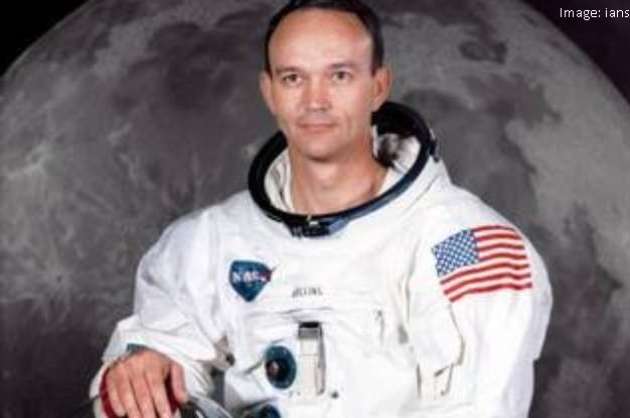Anupama Nair
www.mediaeyenews.com
In the last two parts I spoke about major inventions in the Ancient and Middle Ages. Today I am going to talk about inventions in Modern history starting from electricity, railways, photography, telephone, Airplanes, computers, internet and the list goes on… How can we live in today’s world without any of these?
The development of electricity as a source of power preceded thie conjunction with steam power late in the 19th century. The pioneering work had been done by an international collection of scientists including Benjamin Franklin of Pennsylvania (US), Alessandre Volta of the University of Pavia (Italy), and Michael Faraday (Great Britain). Both the generators and motors underwent substantial development in the 19th century. In particular, French, German, Belgian, and Swiss engineers evolved the most satisfactory forms of armature (the coil of wire) and produced the dynamo, which made the large-scale generation of electricity commercially feasible
In the United States Thomas Edison applied his inventive brain in discovering fresh uses for electricity, and his development of the carbon-filament lamp showed how this form of energy could rival gas as a domestic illuminant. The, subsequent spread of this form of energy is one of the most remarkable technological success stories of the modern times, but most of the basic techniques of generation, distribution, and utilization had been mastered nearly two centuries before. Can you imagine a life without electricity?
The first photograph was taken in 1826 or 1827 by the French physicist J.N. Niepce using a pewter plate coated with a form of bitumen that hardened on exposure. His partners used silver compounds to give light sensitivity, and the technique developed rapidly in the middle decades of the century. By the 1890s George Eastman of the United States started manufacturing cameras and celluloid photographic film for the popular market, and that was the first experiment with cinema, and were beginning to attract attention.
The electric telegraph, was made into a practical proposition for use on developing the British railway system by two inventors, Sir William Cooke and Sir Charles Wheatstone, who worked together and took out a joint patent in 1837. Almost at the same time, an American scientist, Samuel Morse devised the signaling code that was subsequently adopted all over the world. The telegraph system also played an important part in the opening up of the American West by providing rapid aid in the maintenance of law and order.
Alexander Graham Bell, best known for his invention of the telephone, revolutionized communication. His interest in sound technology was deep-rooted and personal, as both his wife and mother were deaf. While there’s some controversy over whether Bell was the true pioneer of the telephone, he started the Bell Telephone Company in 1877. He was born in Scotland, later migrated to Canada and finally settled down in the United States. In 1871, Bell started working on the harmonic telegraph — a device that allowed multiple messages to be transmitted over a wire at the same time.
By 1875, Bell, with the help of his partner Thomas Watson, had come up with a simple receiver that could turn electricity into sound. Scientists, like Antonio Meucci and Elisha Gray, were working on similar technologies, and there’s confusion over who should be credited with the invention of the telephone. It’s said that Bell raced to the patent office to be the first to secure the rights to the discovery.
After getting his telephone patent, he made the inaugural telephone call to Watson, and said, “Mr. Watson, come here. I want you.” He even refused to have a telephone in his study, fearing it would distract him from his scientific work.
The dream of human flight must have begun with observation of birds flying through the sky. In our great epic Ramayana, Ravana the demon king had a flying chariot called “Pushpak Viman” where the Sanskrit word means flying object. In other holy scriptures like the Bible we read about the flying angels. The story of the invention of the airplane begins in the16th to 18th centuries, with the first research into aerodynamics—the study of the forces operating on a solid body (for instance, a wing when it is immersed in a stream of air). For a millennia, however, progress was retarded by attempts to design aircraft that emulated the beating of a bird’s wings. The Wright brothers – Orville and Wilbur were the two American aviation pioneers who invented, build, and flew the world's first successful motor-operated airplane in 1905. They were also the first to invent aircraft controls that made fixed-wing powered-flights possible. In 1914, the world's first scheduled passenger airline service took off, operating between St. Petersburg and Tampa in Florida (USA).
The dream of seeing distant places is as old as the human thoughts. Priests in ancient Greece, studied the inside of birds, trying to see in them what the birds had seen when they flew over the horizon. They believed that their gods, on Mount Olympus were gifted with the ability to watch human activity all over the world. The opening scene of William Shakespeare’s play Henry IV, Part 1 presented the character Rumour, upon whom the other characters rely for news of what is happening in the far corners of England.
Television (TV), is the electronic delivery of moving images and sound from a source to a receiver By extending the senses of vision and hearing beyond the limits of physical distance, television has had a considerable influence on society. The TV as we know was eventually used by John Logie Baird and Charles Francis Jenkins in 1925. to build the world’s first successful televisions.
Charles Babbage, an English mathematician and inventor is credited with having conceived the first automatic digital computer. The idea of mechanically calculating mathematical tables first came to Babbage in 1812 or 1813. Later he made a small calculator that could perform certain mathematical computations to eight decimals. During the mid-1830s Babbage developed plans for the Analytical Engine, the forerunner of the modern digital computer. In that device he planned the capability of performing any arithmetical operation on the basis of instructions received from punched cards, a memory unit to store numbers, sequential control, and most of the other basic elements of the present-day computer.
The desire to travel to moon was a dream of the modern man. Let us see, how it was achieved. In the middle part of the 20th century, space ships were made by both America and Russia. Lyka, a stray dog from Moscow was the first living being to travel to space in a space ship called Sputnik II in 1957. But unfortunately, she died in space. Then it was the turn of man in space. Yuri Gagarinwas a Russian pilot, who became the first man to travel in space, achieving a major milestone in the history of space travel. His space ship Vostok I, completed one orbit of the Earth on 12 April 1961. Gagarin became an international celebrity and was awarded many medals and titles, including “the Hero of Soviet Union”, his nation's highest honor.
The 1969 was again a special year in Space journey. Apollo II was the space ship that first travelled with humans to the moon – Neil Armstrong, Buzz Aldrin and Michael Collins, and was truly a historic moment. Finally, the dream of man to travel to the moon was fulfilled. Armstrong became the first person to step onto the lunar surface and it was truly ““That's one small step for man, one giant leap for mankind” as Armstrong said.
The internet was discovered in 1983. Prior to this, the various computer networks did not have a standard way to communicate with each other. A new communications protocol was established called Transfer Control Protocol/Internetwork Protocol (TCP/IP).
The first "laptop-sized notebook computer" was the Epson HX-20, patented) by Suwa Seikosha's Yukio Yokozawa in July 1980. They introduced at the COMDEX computer show in Las Vegas by Japanese company Seiko Epson in 1981, and released to the world in July 1982.
Now I am going to talk about the invention of cell phones, without which life seems impossible to live. The first handheld cellular mobile phone was discovered by John F. Mitchell and Martin Cooper of Motorola in 1973. The first commercial automated cellular network (1G) analog was launched in Japan by Nippon Telegraph and Telephone in 1979.
I hope we will see more inventions to simplify human life.




























Great job Anupama and Mediaeye. I am a fan of your site.
Great knowledge
Good info. Isha loved it and said Anu Aunty knew lot of things.
Nice informative article. Good job Anupama and Media Eye
Informative article. Will help Mannu in her school project.
Great info
Great info. Useful for kids project
Good info.
Informative article
Useful info
Nice info.
Nice informative article
Interesting info.
Nice info.
Nice info
Great info.
Great and useful info
Nice info.
Good info.
Good info
Great info.
Great info.
Great research done
Great research done
Great research done
Great inventions
Great inventions
Great inventions
Great inventions.
Great inventions.
Great invention
Great invention
Great research work done.
Great research work done.
Great work done by Anupama
Great inventions.
Great inventions.
Great research done
Great research done
Great inventions
Great inventions
Great inventions
Great inventions.
Great inventions.